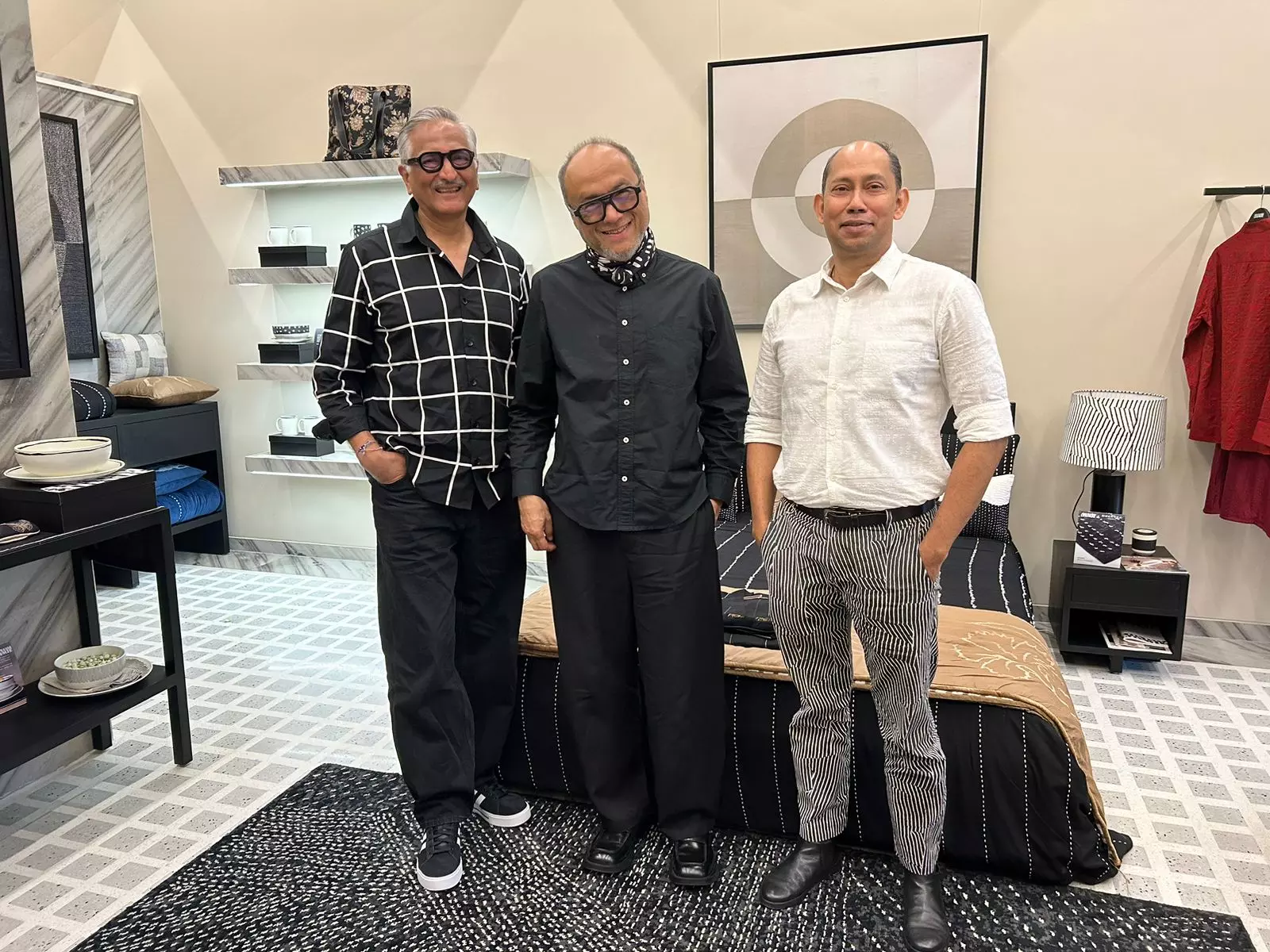Abraham and Thakore's Evolution in Design Philosophy and Global Appeal

In today’s interview, we delve into the fascinating evolution of Abraham and Thakore's design philosophy, exploring the journey from their early days of creating intricate scarves and kimonos to their current, sophisticated fashion collections. As we uncover their creative trajectory, we'll also examine how they skillfully balance traditional Indian crafts with contemporary design, and navigate the transition from European clients to the burgeoning urban Indian market. Additionally, we'll discuss the complexities of textile development, the importance of maintaining high-quality, limited-edition pieces amidst the fast fashion trend, and their vision for a responsible future in fashion. Join us as we gain insights into how cultural identity and sustainability shape their work and why Hyderabad has become their latest focal point in this exciting chapter.
Can you elaborate on how your design philosophy has evolved from your early days of creating scarves and kimonos to your current fashion collections?
Absolutely. Our design philosophy has evolved organically over time, while remaining anchored in our original philosophy and language. We've responded to the changing times, including growing environmental concerns and shifts in consumption patterns. As Indian designers working within the Indian ecosystem, we've been deeply committed to sustaining traditional handloom and handicraft livelihoods. This commitment to sustainability extends beyond the Western perspective to include the preservation of traditional skills and crafts, which are integral to our history and have minimal environmental footprints compared to industrial textiles. While our design language has remained consistent, we continually adapt traditional crafts into modern designs to keep them relevant and maintain their longevity.
How do you balance tradition and Indian crafts with contemporary designs in your collections?
Balancing tradition with contemporary design involves ongoing dialogue and collaboration with artisans. Each season, we reinterpret traditional techniques through a modern lens. For instance, we often work with master weavers like Shri Gajam Govindan, whose work is preserved in the V&A Museum. This collaboration allows us to incorporate their deep knowledge into our contemporary designs, creating a fusion that respects tradition while introducing modern elements. It's a dynamic exchange that evolves over time.
What are some challenges and rewards you’ve experienced while transitioning from catering to European clients to focusing on the urban Indian market?
The challenges are significant due to differences in climate, fashion preferences, and color significance. In Europe, layering and darker colors are common due to longer winters, whereas in India, the climate is warmer, and our color palette reflects cultural symbolism. Adapting to these differences has required a shift in our design approach, focusing on fabrics and colors that resonate with Indian culture and weather. The reward lies in engaging directly with a local audience that appreciates and connects with our work on a cultural level, and witnessing the growing sophistication of the Indian fashion market.
How do you approach textile development and experimentation, given the complexity and time-consuming nature of the process?
We view textile development as a passion and a challenge. Our background in textile design fuels our curiosity to push the boundaries of what's possible. We thrive on experimenting with techniques, whether it's creating larger tie-dye repeats or testing new materials. Our process involves continuous experimentation and refinement, always aiming to explore the limits of our craft while maintaining a focus on simplicity and functionality.
In a world dominated by fast fashion, how do you maintain and promote the value of high-quality, limited-edition pieces in your collections?
We focus on creating limited-edition pieces, often producing only 30-40 units of each style. This exclusivity ensures that our products are unique and not part of the fast fashion cycle. We design with longevity in mind, prioritizing timelessness over trends. Our clients value the durability and craftsmanship of our pieces, which are meant to be worn for years, rather than discarded after a single season.
How do you envision the future of fashion in terms of sustainability and craftsmanship, and how is Ibrahim and Thakur preparing for these changes?
We prefer the term “responsibility” over “sustainability” because it more accurately reflects the balance we strive for between resources and consumption. We focus on the provenance of materials, exploring fibers like tensile, which are biodegradable and come from recycled sources. We also aim to raise awareness about the value of handmade goods and the livelihoods they support. By continually questioning and refining our practices, we seek to minimize harm and support responsible consumption.
What role does cultural identity play in your design process, and how do you ensure it resonates with a global audience while staying true to your roots?
Cultural identity is central to our design process. We draw on our roots and contemporary experiences to create pieces that reflect our heritage while appealing to a global audience. Our designs are a blend of traditional techniques and modern sensibilities, which allows us to stay relevant internationally while maintaining a strong connection to our cultural heritage. This approach has proven successful, as evidenced by our global presence and local relevance.
Why did you choose Hyderabad as a location for your new store?
Hyderabad was a natural choice due to its rapidly developing and sophisticated market. The city is emerging as a major fashion hub with a discerning clientele that appreciates high-quality, unique products. Our long-standing customer base in Hyderabad and the city's growing fashion scene made it an ideal location for expanding our presence and engaging more directly with our audience here.

